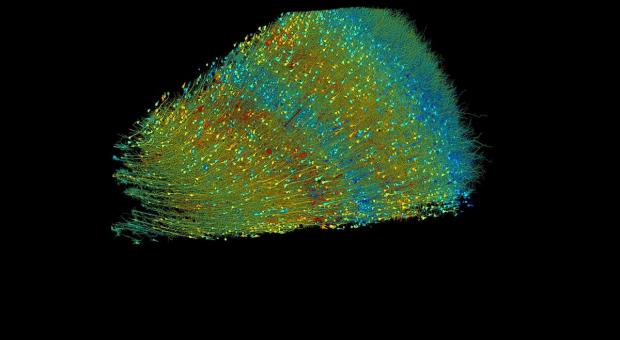
Breaking News
 Alex Jones Warns of the Globalist Death Cult Fueling the Next Civil War and Rise of the Antichrist
Alex Jones Warns of the Globalist Death Cult Fueling the Next Civil War and Rise of the Antichrist
 Is Donald Trump Intent Upon Imposing Martial Law in America?
Is Donald Trump Intent Upon Imposing Martial Law in America?
 Must-See Report! NATO Claims Putin Preparing To Attack Europe As Russia Enters 'Phase Zero'
Must-See Report! NATO Claims Putin Preparing To Attack Europe As Russia Enters 'Phase Zero'
 UK Digital ID: The BritCard Bait And Switch
UK Digital ID: The BritCard Bait And Switch
Top Tech News
SEMI-NEWS/SEMI-SATIRE: October 12, 2025 Edition
 Stem Cell Breakthrough for People with Parkinson's
Stem Cell Breakthrough for People with Parkinson's
 Linux Will Work For You. Time to Dump Windows 10. And Don't Bother with Windows 11
Linux Will Work For You. Time to Dump Windows 10. And Don't Bother with Windows 11
 XAI Using $18 Billion to Get 300,000 More Nvidia B200 Chips
XAI Using $18 Billion to Get 300,000 More Nvidia B200 Chips
 Immortal Monkeys? Not Quite, But Scientists Just Reversed Aging With 'Super' Stem Cells
Immortal Monkeys? Not Quite, But Scientists Just Reversed Aging With 'Super' Stem Cells
 ICE To Buy Tool That Tracks Locations Of Hundreds Of Millions Of Phones Every Day
ICE To Buy Tool That Tracks Locations Of Hundreds Of Millions Of Phones Every Day
 Yixiang 16kWh Battery For $1,920!? New Design!
Yixiang 16kWh Battery For $1,920!? New Design!
 Find a COMPATIBLE Linux Computer for $200+: Roadmap to Linux. Part 1
Find a COMPATIBLE Linux Computer for $200+: Roadmap to Linux. Part 1
 Bionic hand with NO brain implants?!
Bionic hand with NO brain implants?!
 Nano-cubosome eyedrops target macular degeneration without needles
Nano-cubosome eyedrops target macular degeneration without needles
See The Human Brain Like Never Before

Now, after a decade of collaboration with Google scientists, a monumental dataset—with 1,400 terabytes—has turned into the most detailed map of the human brain ever created.
"A terabyte is, for most people, gigantic, yet a fragment of a human brain—just a minscule, teeny-weeny little bit of human brain—is still thousands of terabytes," Lichtman said in a National Institutes of Health report.
The detailed 3-D reconstruction reveals beautiful structures in the brain. Neurons forming dozens of connections, mirror-image neural pairs, and networks far more complex than expected, are just some of the groundbreaking discoveries.
"I remember this moment, going into the map and looking at one individual synapse from this woman's brain, and then zooming out into these other millions of pixels," said Viren Jain, a senior scientist at Google in Nature Magazine. "It felt sort of spiritual."
The map, now part of an open-access dataset online, opens the door to new understandings of human cognition, psychiatric disorders, and the architecture of our minds.
"There is the saying that 'A map of synaptic connections is necessary but insufficient to understand the brain.' In its current form it is still missing a lot of important information, but it is a step in the right direction," Daniel Berger, a scientist in the Lichtman lab, told The Epoch Times.
Excitatory neurons, color-coded by size, with red being the largest and blue the smallest. Cell cores range from 15 to 30 micrometers.
A single white neuron receives signals from more than 5,000 blue axons, with green synapses marking the points where the signals transfer.
Neurons with long dendrites and dendrite spine. In very rare cases, a single axon (blue) made repeated synaptic connections (yellow) with a target neuron (green).
One unexpected discovery in the study was the presence of "axon whorls"—tangled loops of blue axons—which typically transmit signals away from nerve cells. These structures were rare in the sample and sometimes appeared to be resting on yellow cells. Their purpose remains unclear.



